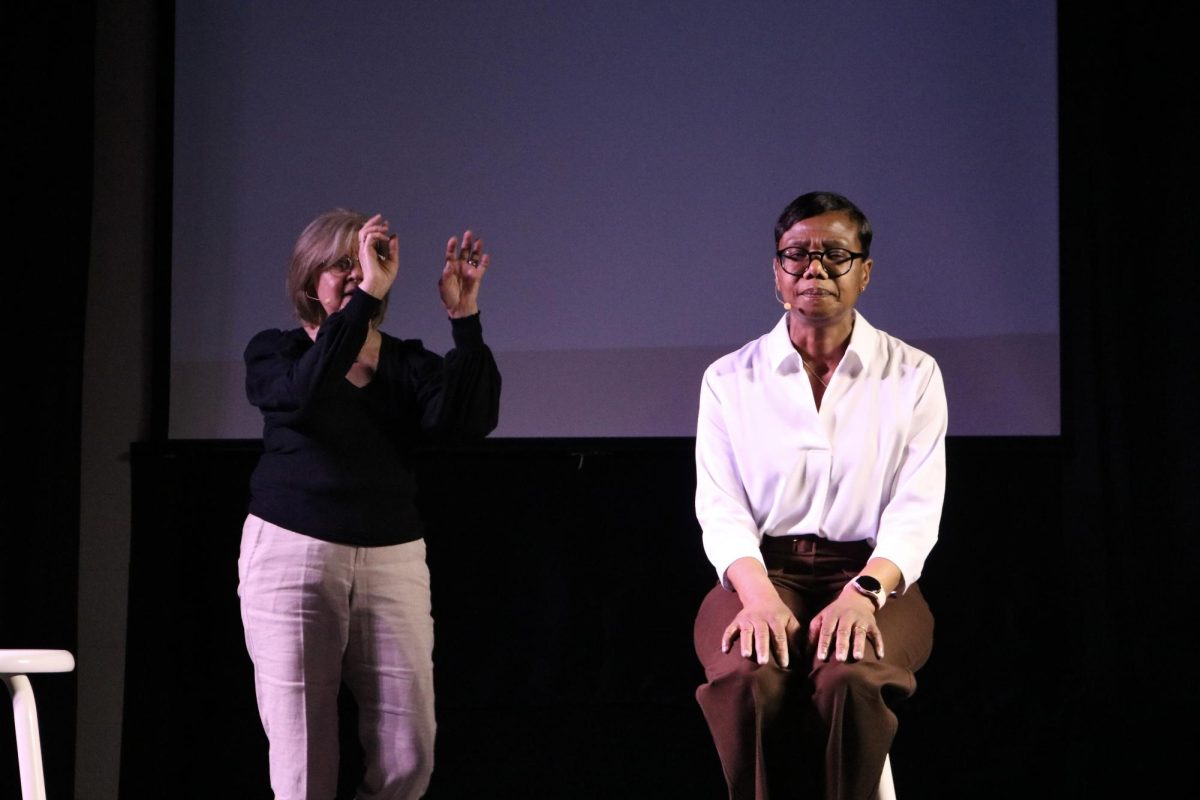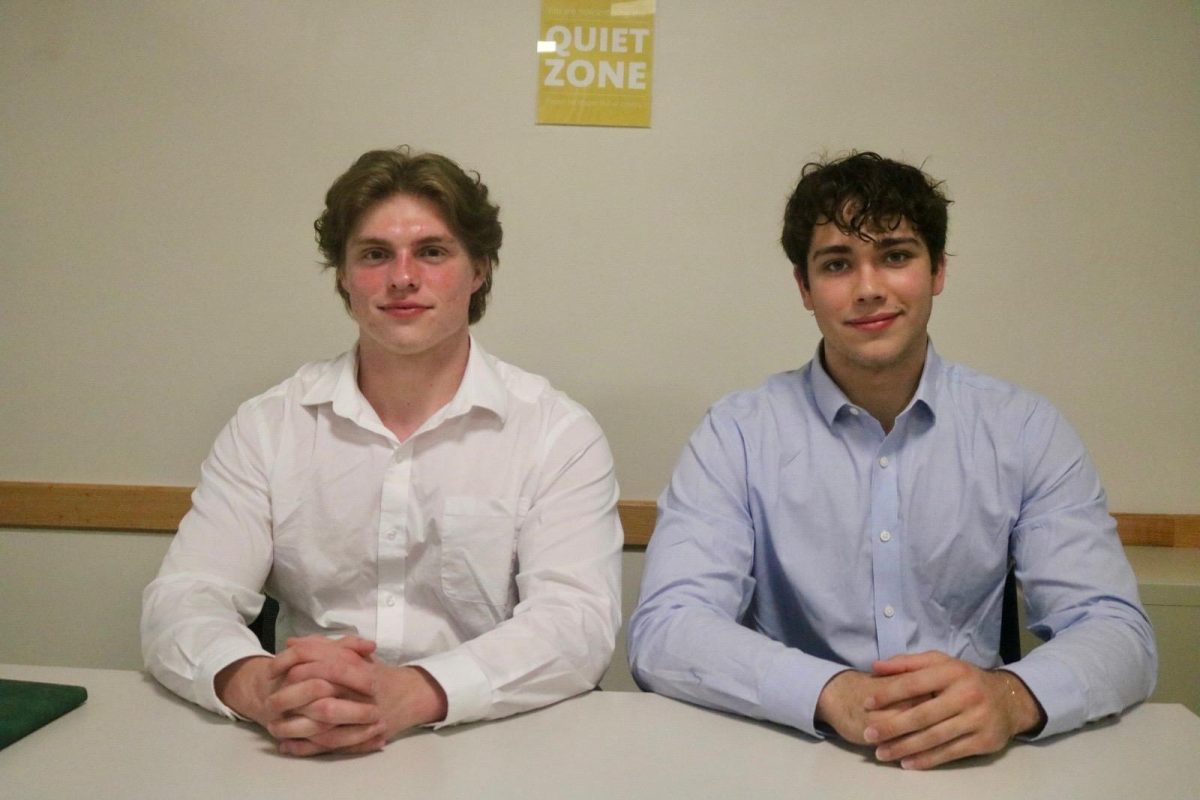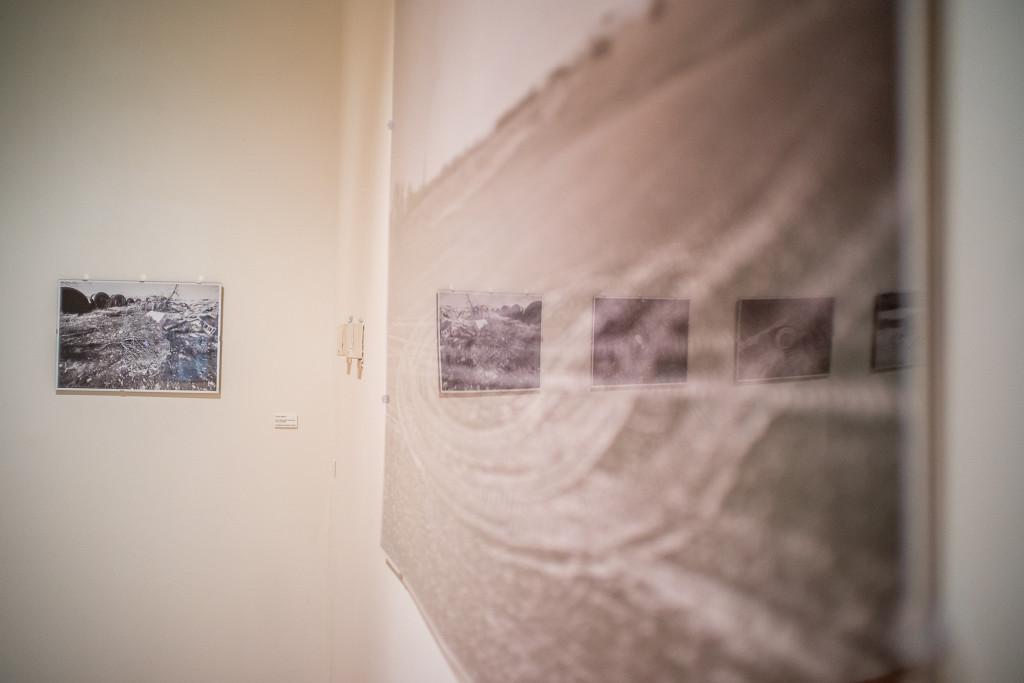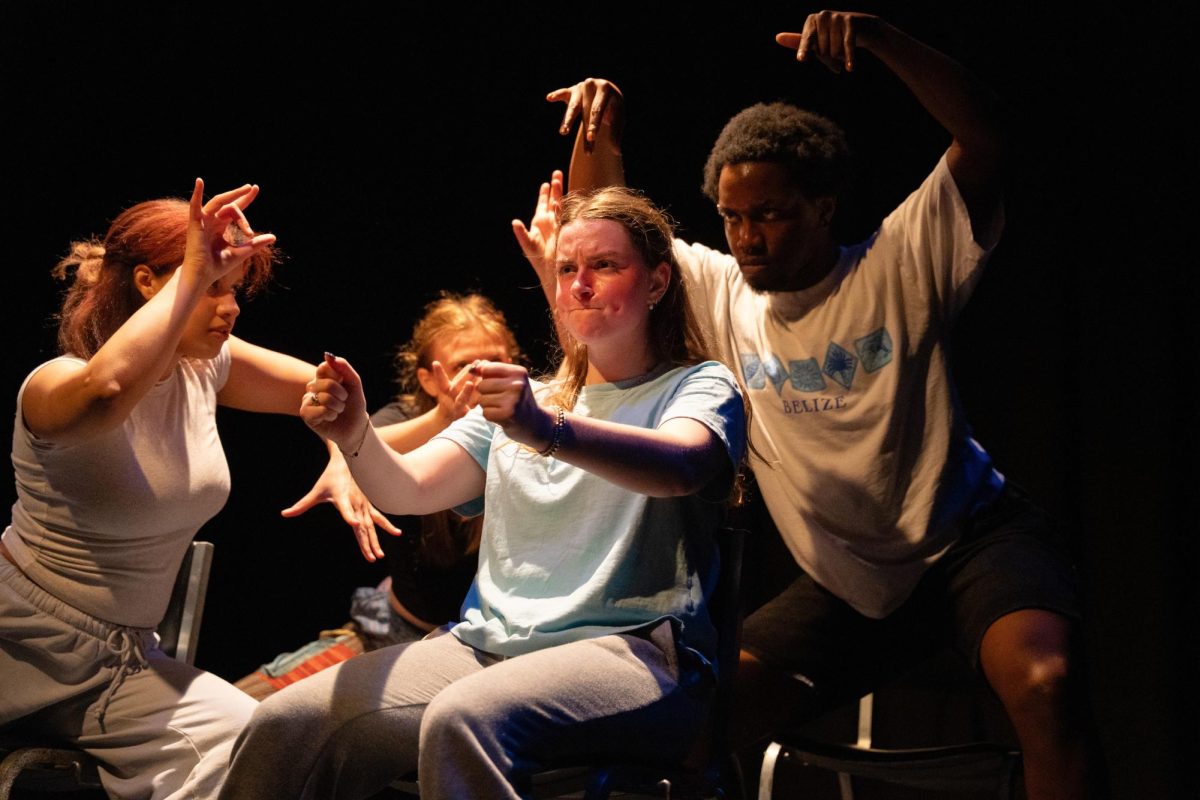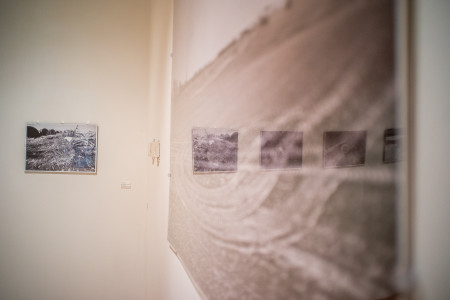
Yishi Liang, Editor-in-Chief
liangyis@grinnell.edu
For the past two weeks, Smith Gallery has been housing Elle Duncombe-Mills’ photography exhibit, “(Un)preserved.” The exhibit is part of Duncombe-Mills’ Mentored Advance Project with Professor Jeremy Chen, Art.
Duncombe-Mills was particularly interested in using photography as a form of activism and critique of social issues. She spent the first half of the semester researching photographers and the history of Iowa. During her time photographing the land, she discovered she was particularly interested in the concept of fences and property when traveling throughout Iowa.
“The idea that [Iowa] was broken into 99 almost perfect squares and people somehow own these now — that’s definitely a theme I found,” Duncombe-Mills said.
In order to further highlight the geometrical nature of these counties and plots of land, Duncombe-Mills collected dirt to incorporate into her exhibit. At the center of Smith are four white blocks filled with dirt Duncombe-Mills found in Iowa. One of the boxes contains corn, one plant debris, another a whole tire and the final has a tire track running across it.
“I wanted to create … resonances of the dirt there and also I’m critiquing people who are claiming the land for their own and then I’m just taking and putting the land in these perfectly square boxes.”
Duncombe-Mills drew inspiration from renowned photographer Richard Misrach, who photographed objects left behind by Mexican migrants when crossing the border and brought the actual objects to his exhibit.
Along the walls of the gallery are four series of photographs, called objects, tread, earth and infrastructure. When Duncombe-Mills first arrived in Iowa she was concerned that she would not find anything worth photographing. However, she has come to enjoy and appreciate this landscape more than she expected.
“Slowly I found such a beauty in the simplicity of the land. I found that I liked shooting it more. I think I like shooting things that are less conventionally interesting or less conventionally beautiful,” she said. “[Treads] can be quite beautiful in that they’re drawings on the land but there’s also something sinister about them.”
The images on display are all in black and white, which Duncombe-Mills did to emphasize both the simple beauty but also the industrial emptiness of Iowa’s land.
“One of my biggest things was to contrast this idealized image of this sunny golden prairie … in quite literally contrasting the colors,” she said.
Additionally, Duncombe-Mills has found that during Iowa winters, the landscape is fairly monotonous in color. Removing the color from her photographs was therefore not a significant change from reality.
One of the larger themes Duncombe-Mills is hoping to explore, both in this project and in the future, is the relationship between humans and the land. She has plans to go west after Grinnell to photograph for a month or so in continuation of this theme.
“(Un)preserved” closes today, April 15, and is Duncombe-Mills’ last solo public display of artwork at Grinnell before she graduates this spring.





